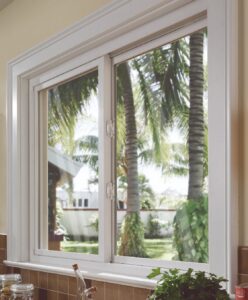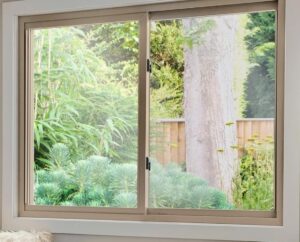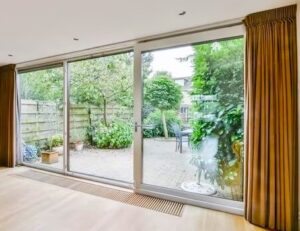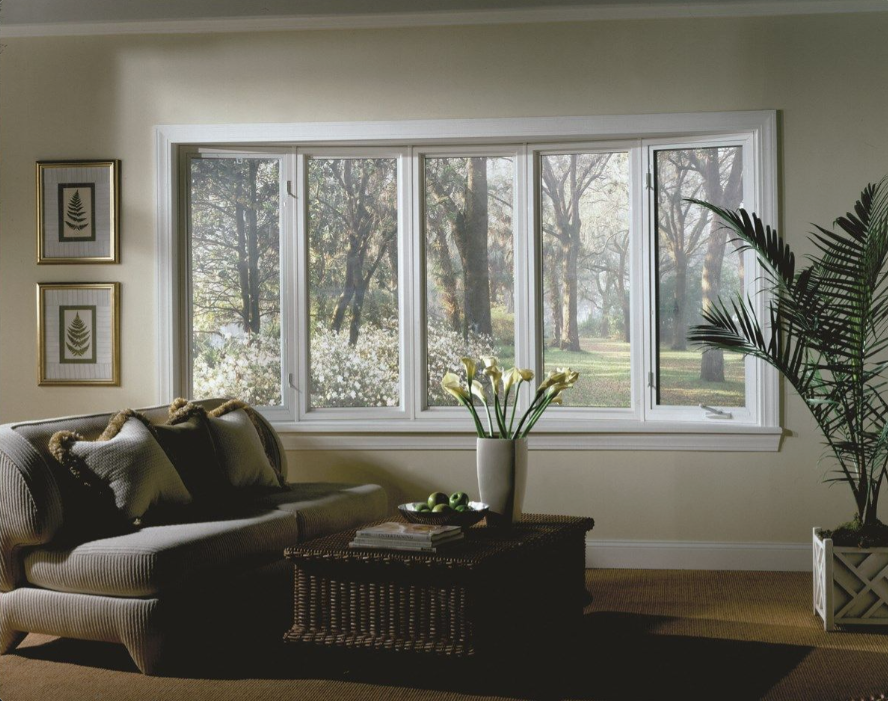What is a Sliding Window?

A sliding window is a problem-solving technique often used in computer science. It helps solve problems involving arrays and sequences by creating a “window” that slides over the data. This method optimizes algorithms, making them more efficient and faster. Sliding windows are also used in various applications, from energy-efficient slider windows in homes to data structure optimizations. Read on to discover how this versatile technique can be applied in both technology and everyday life.
Importance of Sliding Windows

Sliding windows play a crucial role in optimizing various algorithms. They significantly reduce the time complexity from O(n^2) to O(n) in many cases, making them highly efficient. This technique is especially valuable in data processing and problem-solving scenarios where analyzing large sets of data quickly and accurately is essential.
Understanding the Sliding Window Technique

The Sliding Window Concept
The sliding window technique involves a fixed-size window moving over the data. This method is particularly useful when a problem requires analyzing a subset of data continuously. By using a sliding window, you can efficiently handle operations on arrays or sequences without the need to repeatedly process the same elements.
Why Use Sliding Windows?
Sliding windows are efficient for problems involving continuous data segments. They help avoid the brute force approach, which is often time-consuming and less effective. Here are some key reasons to use sliding windows:
- Efficiency: Reduces time complexity and improves algorithm performance.
- Simplicity: Simplifies complex problems by focusing on smaller subsets of data.
- Versatility: Applicable to various types of problems, from finding maximum sums to detecting unique characters in a string.
Key Components of a Sliding Window
Understanding the key components of a sliding window is essential for implementing this technique effectively:
- Window Size: The fixed size of the window determines how many elements are processed at a time. This size can vary depending on the specific problem.
- Outer Loop: The loop that moves the window across the data. This loop ensures that the window slides one element at a time from the start to the end of the array.
- Inner Loop: The loop that processes the elements within the window. This loop performs the necessary operations, such as summing the elements or finding the maximum value.
Types of Sliding Windows

Sliding windows are a popular choice for modern homes due to their ease of use, energy efficiency, and sleek design. They come in various types, each offering unique benefits and features suited for different needs. This section explores single slider windows, double slider windows, and gliding windows.
Single Slider Windows
Single slider windows slide open from either the left or right, providing a simple solution for easy access and ventilation. These windows are popular for their straightforward operation and low maintenance requirements.
Key Features:
- Ease of Use: Sliding windows open effortlessly, making them ideal for frequently used areas.
- Ventilation: Single sliders allow ample fresh air to flow into the room.
- Maintenance: With fewer moving parts, these windows require very little maintenance.
- Affordability: Single slider windows are typically a more affordable option compared to other window types.
Double Slider Windows
Double slider windows have two sashes that move, offering more flexibility and ventilation. This type of window is perfect for larger spaces where maximum airflow is desired.
Key Features:
- Flexibility: Both sashes can slide open, providing versatile ventilation options.
- Ventilation: Double sliders offer enhanced air circulation, making them ideal for living rooms and large bedrooms.
- Energy Efficiency: Designed to be energy efficient, these windows help reduce energy bills.
- Design: Double sliders come in various designs to match the aesthetic of your home.
Gliding Windows
Gliding windows function similarly to double slider windows but typically involve smoother operation and design. These windows are known for their modern look and ease of use.
Key Features:
- Smooth Operation: Gliding windows are designed for smooth and effortless sliding.
- Aesthetic Appeal: These windows offer a sleek and contemporary appearance.
- Energy Efficiency: Like other sliding windows, gliding windows are built to be energy efficient.
- Durability: High-quality window panes and frames ensure long-lasting performance.
Applications of Sliding Windows

Sliding windows are not only essential in home architecture but also play a significant role in computer science. They provide efficient solutions for data processing, algorithm optimization, and problem-solving. This section explores their applications in data structures, algorithms, and specific problem-solving techniques.
Data Structures
Sliding windows are crucial in various data structures for efficient data processing and analysis. They allow for continuous assessment of subsets within a larger data set without the need to recompute results from scratch.
Key Uses in Data Structures:
- Efficient Data Processing: Sliding windows help process large data sets by breaking them into smaller, manageable chunks.
- Sub Arrays Analysis: They are used to analyze sub arrays by sliding a window of fixed size over the data.
- Maintaining State: Sliding windows maintain the state of the processed data, making it easier to update and manage.
Algorithms
The sliding window algorithm is widely used to optimize search and sort operations in computer science. It reduces the time complexity and enhances the efficiency of various computational tasks.
Key Uses in Algorithms:
- Search Optimization: Sliding windows streamline the process of finding specific elements or sequences in data.
- Sorting Efficiency: They improve sorting algorithms by reducing the need for repetitive operations.
- Pattern Matching: Sliding windows are used in pattern matching algorithms to find occurrences of a pattern within a larger dataset.
Sliding Windows in Problem Solving
Sliding windows offer practical solutions for various problem-solving scenarios, particularly those involving arrays and sequences.
Solving Maximum Sum Problems
A sliding window helps find the maximum sum of n consecutive elements in an array. This approach ensures that each subset of the array is evaluated efficiently.
Steps to Find Maximum Sum:
- Initialize Window: Start by summing the first n elements.
- Slide Window: Move the window one element at a time, updating the sum by subtracting the first element and adding the next.
- Track Maximum Sum: Keep track of the highest sum encountered during the process.
Example:
- Consider an array of integers. To find the maximum sum of five consecutive elements, use a sliding window of size five and slide it across the array, updating the sum and tracking the maximum value.
Minimizing Time Complexity
Sliding windows significantly reduce time complexity, making algorithms more efficient. They transform problems that typically require O(n^2) operations into O(n) operations by eliminating unnecessary recomputation.
Key Benefits in Minimizing Time Complexity:
- Reduced Computational Steps: By maintaining a fixed window, the number of required operations decreases.
- Efficient Loop Management: Sliding windows eliminate the need for nested loops, simplifying the algorithm.
- Dynamic Updates: They allow for dynamic updates to the data being processed, ensuring that each step is both efficient and effective.
Sliding Windows in Real Life

Sliding windows are not just a computational technique but also a practical feature in home and building design. They offer benefits such as energy efficiency, low maintenance, and structural integrity. This section explores how sliding windows improve everyday living.
Energy Efficient Windows
Sliding windows are energy efficient. They help maintain indoor temperatures and reduce energy bills by providing excellent insulation. These windows are designed to minimize heat loss in the winter and keep cool air inside during the summer, making them an essential feature for any energy-conscious homeowner.
Key Benefits:
- Insulation: The design of sliding windows, with tight seals and energy-efficient window panes, helps keep the indoor temperature stable.
- Reduced Energy Bills: By maintaining a consistent temperature, sliding windows reduce the need for heating and cooling, leading to lower energy bills.
- Natural Light: Sliding windows allow natural light to enter, reducing the need for artificial lighting during the day.
Replacement Windows
Replacement windows, especially sliding types, offer very little maintenance and smooth operation. When upgrading old windows, sliding windows are an ideal choice due to their durability and ease of use.
Advantages of Replacement Sliding Windows:
- Smooth Operation: The sliding mechanism ensures that windows open and close easily, providing effortless ventilation.
- Low Maintenance: With fewer moving parts, sliding windows require minimal maintenance, making them a practical option for busy homeowners.
- Aesthetic Appeal: Replacement sliding windows can enhance the appearance of your home, with options available in various styles and materials to match your décor.
Types of Replacement Sliding Windows:
- Single Slider Windows: These windows slide open from either the left or right, offering a simple and affordable option.
- Double Slider Windows: Both sashes of these windows move, providing increased flexibility and ventilation.
- Gliding Windows: Known for their smooth operation and modern design, gliding windows are a stylish choice for any home.
Structural Integrity
Sliding windows provide good structural integrity due to their fixed and moving parts design. The combination of stationary sashes and operable windows ensures durability and stability, making them a reliable choice for any building.
Key Features:
- Durable Design: The fixed and moving parts of sliding windows work together to create a robust structure that can withstand various weather conditions.
- Enhanced Security: Sliding windows often come with secure locking mechanisms, adding an extra layer of protection for your home.
- Versatility: Available in configurations with two panes or three panes, sliding windows can be customized to fit different openings and structural requirements.
Benefits of Structural Integrity:
- Long-lasting Performance: High-quality materials and construction ensure that sliding windows maintain their functionality over time.
- Safety: The sturdy design reduces the risk of break-ins and enhances overall home security.
- Aesthetic Consistency: The structural integrity of sliding windows ensures that they retain their appearance and functionality, even with frequent use.
Challenges in Using Sliding Windows

Sliding windows, while beneficial, present certain challenges in both computational applications and real-world usage. This section explores the key difficulties in choosing the right window size, handling edge cases, and managing complexity in nested loops.
Choosing Window Size
Choosing the right window size is critical for the efficiency of the sliding window technique. An optimal window size ensures that the data is processed accurately and efficiently.
Key Considerations:
- Problem Requirements: The window size must align with the specific requirements of the problem or application.
- Data Analysis: For problems involving continuous data, such as finding the maximum sum of consecutive elements, selecting an appropriate window size is crucial.
- Energy Efficiency: In real-world applications, choosing the right size for slider windows impacts energy efficiency and overall performance.
Challenges:
- Balancing Act: A window that is too large may include unnecessary elements, while a window that is too small might miss important data.
- Adaptability: Different problems may require different window sizes, necessitating flexible approaches.
Handling Edge Cases
Handling edge cases, such as the first element or the last element, can be challenging when using sliding windows. These edge cases can significantly affect the accuracy and performance of the sliding window algorithm.
Common Edge Cases:
- First Element: The initial position of the sliding window must be handled carefully to ensure accurate results.
- Last Element: The final elements in the data set often require special handling to avoid errors.
Strategies for Edge Cases:
- Initialization: Proper initialization of the sliding window helps mitigate issues related to the first element.
- Boundary Conditions: Explicitly checking boundary conditions ensures that the last element is processed correctly.
Complexity in Nested Loops
Two nested loops can still be complex to handle, even with the sliding window technique. Nested loops are often necessary to manage the sliding window operation, but they introduce additional complexity.
Challenges:
- Performance Issues: Nested loops can lead to increased time complexity, making the algorithm less efficient.
- Code Complexity: Managing nested loops can make the code more difficult to read and maintain.
Solutions:
- Optimization: Optimizing the inner and outer loops can help reduce the overall complexity.
- Algorithm Design: Careful design of the sliding window algorithm can minimize the need for deeply nested loops.
Comparing Sliding Windows to Other Types

Sliding windows come in various designs, each offering unique benefits. Understanding these differences can help you make informed decisions for your home or project.
Double Sliders vs. Single Sliders
Double sliders have both sashes that can move, offering maximum ventilation and access, ideal for larger rooms. They are more energy efficient but tend to be more expensive.
Single sliders open from either the left or right, providing easy access and operation. They are more affordable and require minimal maintenance, although they offer less ventilation compared to double sliders.
Gliding vs. Fixed Windows
Gliding windows slide open, providing excellent ventilation and a sleek, modern look. They offer good energy efficiency but may not insulate as well as fixed windows.
Fixed windows do not open, offering superior insulation and energy efficiency. They enhance security and require very little maintenance, making them ideal for maximizing natural light without ventilation.
Sliding vs. Other Window Types
Sliding windows are easy to operate and maintain, saving space and providing energy efficiency. Casement windows swing out, which can be cumbersome in tight spaces, while awning windows hinge at the top and offer good ventilation but less space efficiency. Bay windows create more interior space and panoramic views but are more complex and costly.
In Conclusion
The sliding window technique simplifies complex problems in both computing and daily life by breaking them into smaller parts, improving efficiency.
Fort Walton Beach Window & Door Solutions the right sliding window enhances comfort, energy efficiency, and functionality. Options like single and double sliders, and gliding windows offer great ventilation and a modern look. Energy-efficient replacement windows reduce energy bills and improve comfort.
Consider using the sliding window technique for both computing tasks and home improvement projects. It optimizes performance and simplifies tasks, making it a versatile solution for enhancing digital and physical environments.
